Ever noticed how a single melody can stir emotions, even when you don’t understand the lyrics? That’s the power of music. It transcends language, connecting people across continents and generations in ways few things can. From classical tunes to modern world music, rhythms and harmonies spark shared emotions across preconceived lines.
Beyond the notes, traditional instruments are storytellers that carry centuries of history, beliefs, and cultural identity in every sound. They preserve heritage, helping people understand and appreciate different cultures. So, the Remitly team has created this guide to take you on a global journey through traditional instruments. You’ll learn the cultural significance of these instruments and how they continue to inspire and shape modern music today.
The heartbeat of Africa: Drums and percussion
In Africa, drums and percussion serve as bridges between people and spirits.
Djembe
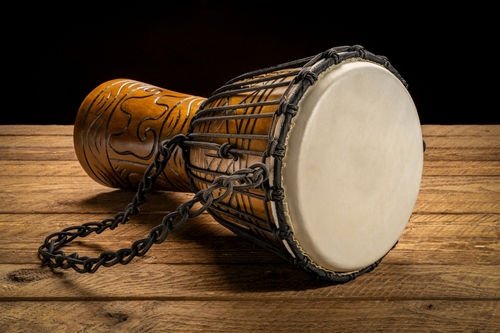
The djembe, a goblet-shaped hand drum from Mali and Guinea, is carved from hardwood with a goatskin head. You can produce three main sounds—bass, tone, and slap—by striking different areas of the drum with your hands.
You’ll hear the djembe played in many community events, including music festivals, funerals, naming ceremonies, and harvests, where it adds drama and emotion to storytelling. In skilled hands, it can shift moods, mimic movements, and bring stories to life through sound.
Talking drums
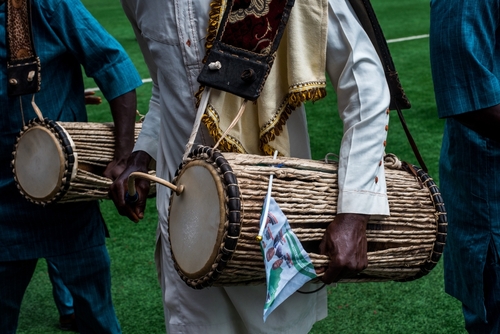
The talking drum, or dùndùn, of Nigeria’s Yoruba tribe is an hourglass-shaped drum with cords connecting its two heads, allowing for pitch changes when squeezed. If you strike it with a curved stick, it mimics speech, which is why it was historically used to carry messages across villages.
Today, the drum thrives as a part of ceremonies, praise songs, and rituals, while modern performers blend it into Afrobeats, highlife, and pop music. The rising and falling tones of the talking drum create musical conversations that echo spoken words.
Mbira (thumb piano)

The mbira, or thumb piano, consists of metal keys on a wooden board, played with thumbs and forefingers to create chiming, interlocking patterns. It holds religious significance in Zimbabwe’s Shona culture, serving as a medium to invoke spirits and seek their guidance during traditional bira ceremonies. However, it also has a presence in funerals and weddings.
Centuries-old songs played on this instrument help preserve memory and cultural identity. Modern artists like Thomas Mapfumo adapt mbira patterns to the guitar, blending tradition with fresh sounds.
How African instruments influence world music
African percussion introduced layered rhythms, offbeat patterns, and call-and-response arrangements, which became the basis of genres like jazz, salsa, rumba, Afrobeat, and rock.
From Havana to New Orleans to global pop, these drum beats shaped the world. You can hear their influence in Fela Kuti’s music and in experiments by Paul Simon and Peter Gabriel.
Asian harmonies: Strings and wind instruments
Asia’s music is rich and diverse, with ethnic instruments that carry culture, history, and emotions.
Sitar
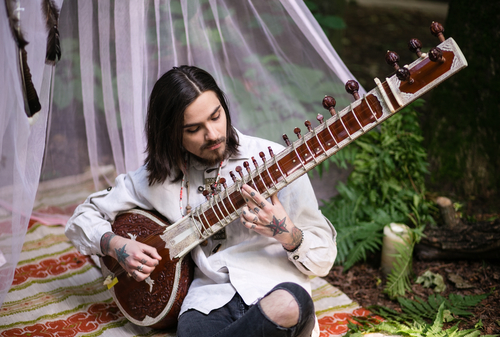
The Indian sitar has resonating strings, movable frets, and an iconic long neck. It allows musicians to play complex ragas that convey moods and spiritual themes. Masters like Ravi Shankar showed this instrument’s range, from serene calm to energetic bursts.
The sitar also influenced much of 1960s rock and pop music, inspiring guitarists like George Harrison from The Beatles.
Guzheng
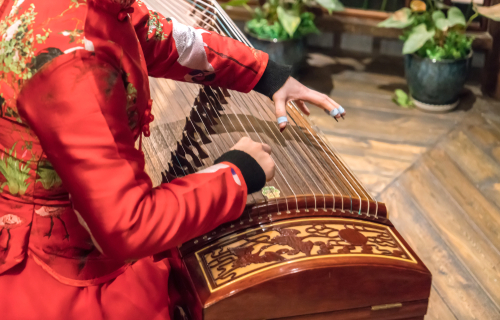
China’s guzheng features a curved wooden body with strings stretched over movable bridges. Plucked with fingerpicks, this ancient instrument creates clear, fluid melodies often compared to rippling water.
Traditionally, the guzheng evokes peaceful countryside scenes and the changing seasons. Its distinct sounds have appeared in contemporary classical music, Disney soundtracks, and popular movies like Crouching Tiger, Hidden Dragon.
Shakuhachi flute
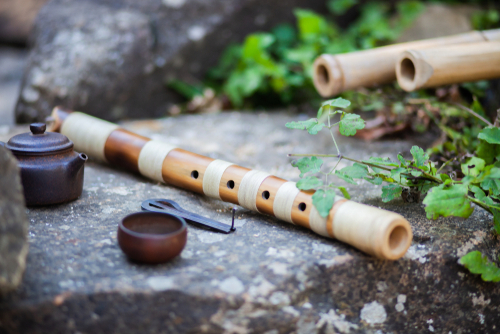
Japan’s shakuhachi is a bamboo flute that produces haunting, airy tones. It’s often used by Zen monks for meditative practice where breath, tone, and silence matter as much as the notes.
Today, these expressive sounds are featured in Western music genres like jazz or electronica, and in movies such as The Last Samurai and Memoirs of Geisha.
Tabla
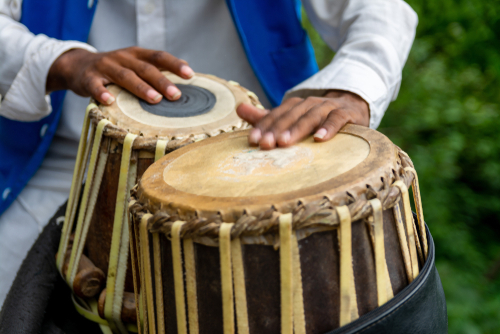
Rhythm is central to Asian music, and India’s tabla exemplifies this beautifully. The pair of hand drums creates a rich variety of tones, with each strike named and woven in complex patterns called tala. It interacts seamlessly with melodic instruments, almost like a conversation.
Together with the sitar, guzheng, and shakuhachi, the tabla showcases the beauty, depth, and cultural significance of Asian music. Their sounds inspire artists worldwide while carrying centuries of history and philosophy in every note and rhythm.
European folk traditions: Fiddles, pipes, and more
Europe’s music traditions are rich with regional sounds, and folk instruments carry inspiring stories of heritage and community.
Celtic fiddle
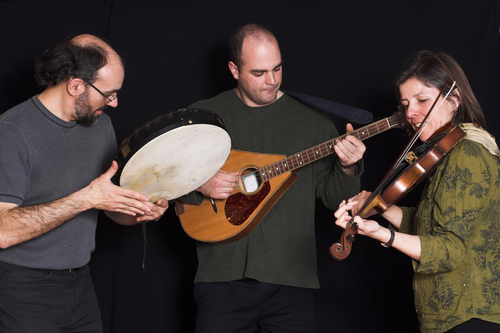
The Celtic fiddle is a violin used in Irish and Scottish folk music. It’s known for its decorative notes, special bowing, and unique playing techniques. This instrument’s lively tunes have filled village halls and festivals for centuries, helping dancers move through reels and jigs. Listening to a skilled fiddler, you can almost picture the rolling hills of the highlands or charming Irish streets.
Accordion
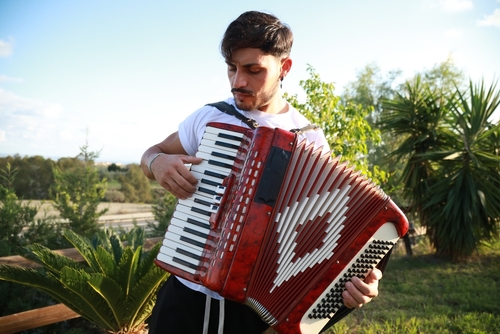
The accordion, a portable bellows-driven instrument with metal reeds, is a folk favorite that has spread across Europe, from France to Italy and beyond. You play it by strapping the instrument to your chest, pressing the keys or buttons, and moving the bellows in and out.
Its rich notes provide melody and rhythm, making it perfect for weddings, street performances, and community dances. Unlike the fiddle, accordions fill the room with a full, layered sound.
Bagpipes
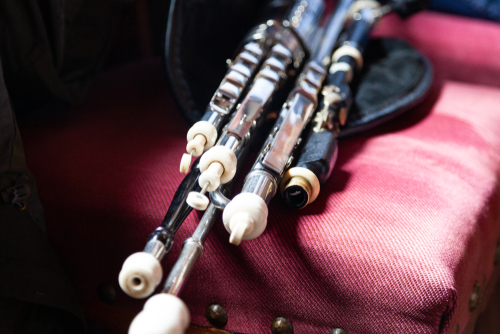
A bagpipe is a wind instrument that uses a bag to store air, which flows through reed pipes when you blow into one and press the bag with your arm.
Iconic in Scotland and found in other European countries, bagpipes were historically used to rally soldiers or mark important events. Today, they are common features in ceremonies, parades, and national celebrations. Their steady drones evoke pride and solemnity, depending on the tune.
Balalaika
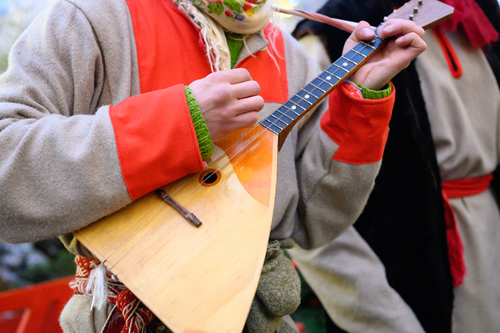
Meanwhile, the balalaika from Russia has three strings and a recognizable triangular body. Its bright, plucky tone powers village gatherings and folk dances with percussive energy. Each strum can express joy, sorrow, or celebration, connecting listeners to Russia’s cultural heritage.
Instruments like the balalaika show how European folk music blends regional identity, history, and tradition into sound.
The Americas: Indigenous sounds and cultural fashion
The music of the Americas mixes indigenous traditions with other cultural influences, with each instrument telling a story about its people and surroundings.
Native American flute
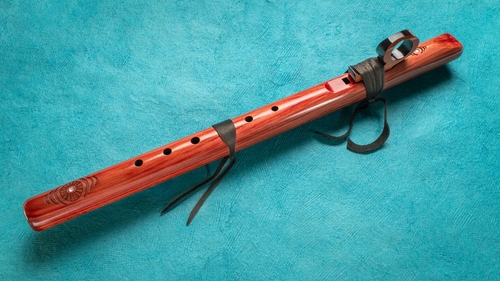
The Native American flute is one of the continent’s most revered ethnic instruments. Made from wood or bone, it produces haunting, airy tones tied to nature and spirituality. It’s often used in ceremonies, storytelling, and for personal reflection.
Listening to it, you can imagine winds sweeping across deserts or forests, carrying melodies that evoke peace and reverence for the natural world.
Charango
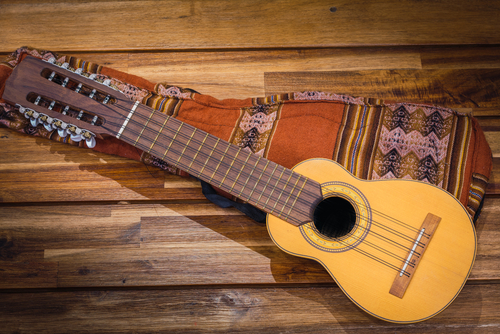
High in the Andes, the charango is a tiny, stringed instrument, often made with an armadillo shell resonator. Its bright, lively sound has historically accompanied dances, festivals, and community gatherings. Combining Spanish guitar influences with indigenous traditions, the charango’s cheerful notes carry centuries of Andean culture across the mountains.
Steel drums
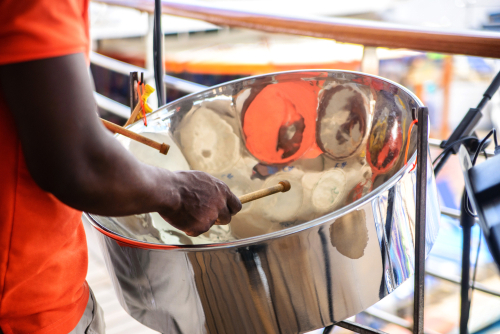
Steel drums—or steel pans—originated on the sunny shores of Trinidad and Tobago, but they bring energy and rhythm to any celebration.
These melodic instruments are central to Caribbean carnivals and street festivals, and their warm, punchy sound is guaranteed to make everyone dance.
Modern revival: how traditional instruments shape today’s music
Traditional instruments from around the world continue to inspire music today. From the sitar to djembe and bagpipes, they are now regularly fused with pop, rock, electronic, and jazz styles.
Contemporary performances
A modern track might pair a shakuhachi flute with electronic beats or a Celtic fiddle with indie rock. For example, Anoushka Shankar blends India’s classical sitar with contemporary music. Ibeyi, the French-Cuban twin sister duo, also fuses Afro-Cuban percussion with electronic and soul.
Cultural festivals like WOMAD (World of Music, Arts, and Dance) or Malaysia’s Rainforest World Music Festival showcase these world music instruments on a global stage. Such events allow you to enjoy heritage music live while encouraging creative reinterpretations.
How technology plays its part
Social media, digital platforms like YouTube, and streaming services have further broadened access, allowing audiences worldwide to experience and engage with traditional music in new and innovative ways. Further, Coursera courses and Zoom lessons make authentic styles easy to learn from anywhere.
Services like Spotify, Bandcamp, and SoundCloud are also important, as they offer listening libraries that make it easier than ever to explore traditional music and keep it alive. Meanwhile, online communities on Reddit, Discord, Facebook, and more allow you to share tips, post practice clips, and connect with teachers.
Preserving musical heritage
Cultural music preservation matters because it carries history, beliefs, and identity in ways books never could. Teaching songs and instruments passes on language, traditional rituals, and community life, from family ceremonies to local gatherings.
Learn traditional instruments
But what if you want to play these traditional instruments yourself?
You can learn the basics through community centers, cultural institutes, and folk clubs alongside a like-minded community. For deeper study, conservatories and archives offer guided lessons as well as recordings and transcriptions to help you practice.
Formal and informal programs at universities, community colleges, and cross-cultural music departments document and teach traditional styles. However, specialist schools provide more targeted training to ensure musicians deliver high-level performance.
Apprenticeships are just as valuable, too, because they let you study under master musicians in workshops, summer schools, or residences. You’ll absorb subtle techniques and cultural context that formal courses may miss.
What to do when starting out
These options will help you master playing the traditional instrument of your choice, but they can take time, effort, and sometimes, a substantial investment. As a beginner, you might not be ready to put all that in; you might just be looking for a more casual learning experience. In that case, your next step is to:
- Watch a few curated performances
- Attend a local workshop or trial lesson
- Join digital communities with other enthusiasts
- Connect with teachers and fellow learners online
You can start with these actions while connecting to a living tradition that continues to thrive. Meanwhile, online platforms like Patreon and Ko-fi allow you to support small instructors, while Etsy and specialty shops connect you with instrument makers worldwide.
Music as our shared heritage
Traditional instruments carry the voices and histories of the cultures that created them. From the sitar of India to the mbira of Zimbabwe, each reflects the values and traditions of its people. Exploring them reveals the diversity of the human experience and reminds us that music is a shared language with the potential to build respect, understanding, and unity across cultures.
You don’t need to be a musician to be part of this heritage. Attend world music concerts or festivals, or simply listen to recordings of cultural music from across the globe. Supporting preservation efforts—whether by streaming traditional songs or buying from local instrument makers—helps keep this rich musical history alive for future generations.
FAQs
What makes an instrument traditional?
An instrument is considered traditional when it’s passed down through generations. It often plays a key role in ceremonies, storytelling, and community life, with its design and sound reflecting a culture’s history and identity.
Can I learn traditional instruments if I’m not from that culture?
Yes, anyone can learn as long as it’s done with respect. Appreciate the instrument by exploring its history, understanding its cultural relevance, and, when possible, studying with teachers or communities who preserve the tradition.
Where can I hear traditional instruments being played?
Traditional instruments can be experienced at cultural centers, folk clubs, and world music festivals. Museums often feature live demonstrations, while YouTube, streaming platforms, and social media sites make it easy to enjoy performances from around the world while supporting the communities preserving these traditions.
Why is it important to support communities that preserve traditional music?
Supporting these communities helps maintain cultural identity, ensures traditions are passed on to future generations, and provides economic opportunities for local musicians and instrument makers.